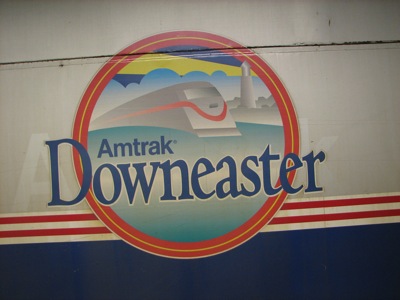Whenever the Antiplanner reads a news story such as this one, which tells how Amtrak’s Boston-to-Portland Downeaster train hit an automobile, I think, “There were only 48 people on that train. We’re subsidizing a train to carry just 48 people?”

Flickr photo by lazytom.
While the route of the Downeaster is 116 miles, it is considered a commuter train and was subsidized by the Federal Transit Administration, so it is in the National Transit Database. Amtrak timetables indicate the train makes five round trips each day (which means two train sets each make 2-1/2 round trips). The 2008 transit database reports that it carries an average of 492 passengers each weekday, and slightly more on Saturdays and Sundays. That means the average train carries about 50 people. Since not everyone goes the whole distance, the average number of people on board at any given time will be somewhat less.







